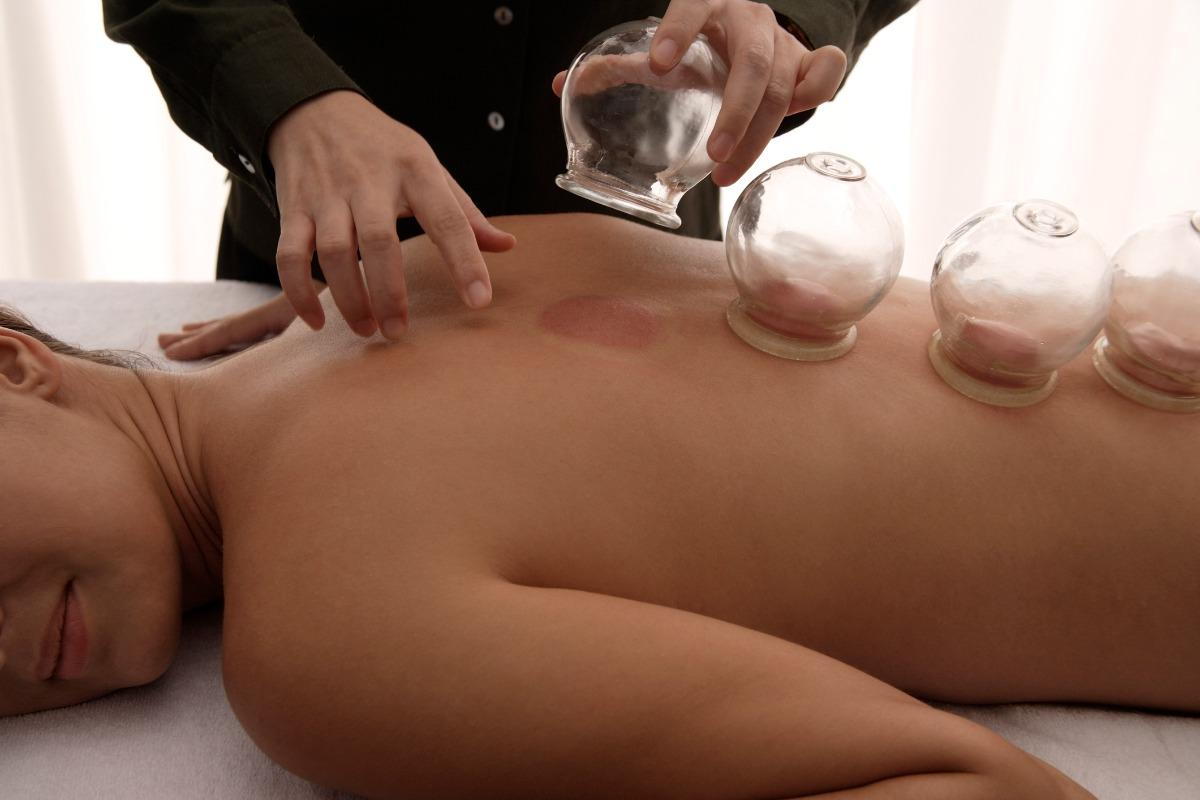
A few weeks ago, we introduced our new Acupuncturist, Denise
DuRoss, and explained a bit about the benefits of using acupuncture therapy.
Today Denise is back to talk about another kind of treatment that is a close
companion to acupuncture, known as cupping.
The earliest use of cupping recorded in China is from the famous Taoist alchemist and herbalist, Ge Hong (281–341 A.D.). Traditional Chinese Medicine (TCM) has employed this methodology ever since. There is evidence, however, that the practice dates as far back as 3000 BC, and was used by the Egyptians and the ancient Greeks, to name just two of the many early civilizations who believed the practice to be beneficial.
Why Try Cupping?
Cupping is used to treat both acute and chronic disorders; it’s believed to help with pain and inflammation from arthritis, migraines, and IBS to Chron’s disease and gluten intolerance. The practice has even shown to be effective in getting rid of cellulite, spider veins, eczema, and acne while simultaneously enhancing circulation, relaxation, and well-being. Some patients use it as a type of deep tissue massage.
I’ve had much success using cupping to help correct respiratory issues when it is performed on the upper back over the lungs—many of my patients have been able to stop taking their prescription medications, have gotten off their breathing machines, or have found relief from snoring and symptoms of COPD. I also find its very effective for helping patients overcome the flu, by expediting the evacuation of phlegm.
The Process
Cupping is performed when a therapist places cups on the skin to create suction. Modern cups are made from glass, plastic, or silicone, although bamboo cups were used throughout history. In the method I use—known as dry cupping—a cotton ball is ignited inside the cup. As the air inside the cup cools, it creates a vacuum; so placing the cup upside down on the skin causes skin to rise and redden as the blood vessels expand. The cup is generally left in place for up to 3 minutes. I like to think of it as the inverse of massage.
The premise behind the practice is this: the body has 12 meridians, each with its own flow of qi (pronounced chee). Wherever there is dis-ease in the body, the flow of qi is impeded. Therefore, treating the affected area reinstates the proper flow of energy, pulling out toxins that linger in the tissues and bringing fresh, oxygenated blood to heal the inflammation. Ultimately this reinstates balance in the body wherever there was formerly an imbalance.
What to Expect After Your First Cupping Session
The most common misunderstanding about the benefits of cupping is the marks that appear as a result of treatment. In North America, we consider bruising a sign of injury, but in TCM, it means something else entirely. It’s important that my clients know the physiological reason for the marks, so they realize they are not painful and that they can usually expect to feel immediate relief after a treatment.
When injuries occur deep within the muscle, the resulting bleeding is not always visible on the skin’s surface. Furthermore, edema can cause the coagulation of sticky proteins, lymph, and cellular debris, and this combined with stagnant blood, pathogens, and toxins can result in very dark marks after cupping.
All that has occurred when these dark marks present is that the stagnation has been moved from the deep layers of the tissue to the skin’s surface, freeing the body to heal itself and purge the unhealthy cells, much like a detox. The darker the mark, the greater amount of stagnation and toxicity in the area; however, if none is present, there will be only slight pink markings that will disappear within a few hours.
Sometimes after treatment, I may recommend bandages and an antibacterial agent like colloidal silver in order to prevent infection. Typically your skin will look normal again within 10 days. To learn more about this highly effective treatment, come to our Benefits of Cupping Talk on Monday 8/21 at 6:30pm. Call In8Love at 310-477-3335 to reserve your spot today.
Sources:
